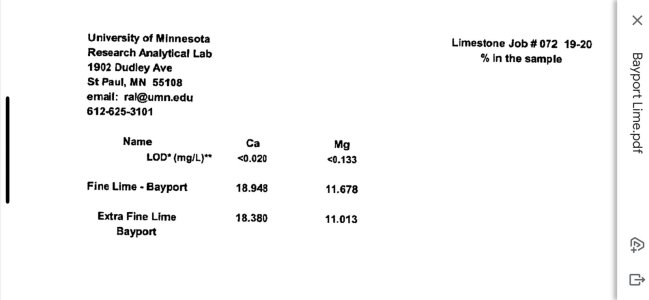Wind Gypsy
5 year old buck +
Got my soil test results back last week and my pH is about the same as it was before I spread 2 tons/acre of 87% ENP dolomitic lime about a year ago. Not really sure how to move forward with that.
Basic history:
-Sent in samples to U of MN for soil test report last May. Results were 5.6 and 5.7 pH
-I surface spread 2 tons/acre of dolomitic lime with 87% ENP, did not incorporate
-I didn't request enough info on my u of M tests so I sent in another sample to Ward labs for the total soil health assessment in mid July after spreading lime, results were 6.1 pH
-Took samples in late may/early june this year and sent in to ward labs, pH of 5.6 and 5.8. This ground has not been tilled, just had a rye/clover blend drilled into it last fall.
I know it could take a while for the lime to neutralize things especially when not incorporated but these results surprised me.
Soil samples were all taken with a probe to only about 5" depth in a random distribution throughout the plot.
Really dont want to try to find time to spread another load of lime this year..
Basic history:
-Sent in samples to U of MN for soil test report last May. Results were 5.6 and 5.7 pH
-I surface spread 2 tons/acre of dolomitic lime with 87% ENP, did not incorporate
-I didn't request enough info on my u of M tests so I sent in another sample to Ward labs for the total soil health assessment in mid July after spreading lime, results were 6.1 pH
-Took samples in late may/early june this year and sent in to ward labs, pH of 5.6 and 5.8. This ground has not been tilled, just had a rye/clover blend drilled into it last fall.
I know it could take a while for the lime to neutralize things especially when not incorporated but these results surprised me.
Soil samples were all taken with a probe to only about 5" depth in a random distribution throughout the plot.
Really dont want to try to find time to spread another load of lime this year..


